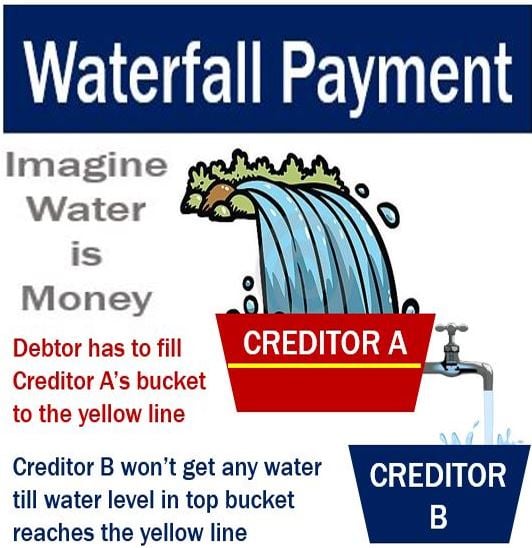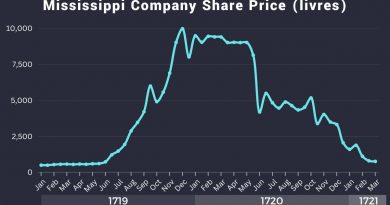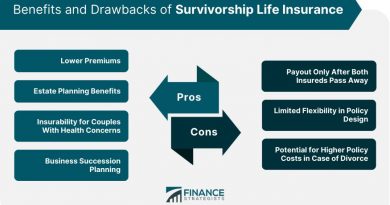Waterfall Payment Definition Benefits How It Works and Example

Waterfall Payment: Definition, Benefits, How It Works and Example
What Is a Waterfall Payment?
Waterfall payment structures require higher-tiered creditors to receive interest and principal payments, while lower-tiered creditors receive principal payments after the higher-tiered creditors are paid back in full. Debtors structure these schemes into tranches to prioritize the highest-principal loans first because they are also likely the most expensive.
Key Takeaways
Waterfall payment structures allow higher-tiered creditors to be paid principal and interest ahead of lower-tiered creditors.
Lower-tiered creditors are paid interest-only payments until higher-tiered creditors are paid in full.
Waterfall payments can be structured to pay off one loan at a time or pay all loans in a systematic fashion.
How a Waterfall Payment Works
Imagine a waterfall cascading down into buckets. The water represents money, and the buckets represent creditors. The water fills the first bucket first. The second bucket will fill only after the first is full. As water flows, more buckets are filled in the order they appear.
Typically, bucket sizes (size of debt) decrease as the water descends. This is likely because paying off large debts reduces the risk of insolvency and frees up cash for operations, capital expenditures, and investments.
For example, this type of plan works best for a company repaying more than one loan. Assume this company has three operating loans, each with different interest rates. The company makes principal and interest payments on the costliest loan and makes only interest payments on the remaining two. Once the most expensive loan is paid off, the company can make all interest and principal payments on the next, more expensive loan. The process continues until all loans are repaid.
Example of Waterfall Payments
To demonstrate how a waterfall payment scheme works, assume a company has taken loans from three creditors: Creditor A, Creditor B, and Creditor C. The scheme is structured so that Creditor A is the highest-tiered creditor while Creditor C is the lowest-tiered creditor. The arrangement for what the company owes each creditor is as follows:
-Creditor A is owed $5 million in interest and $10 million in principal.
-Creditor B is owed $3 million in interest and $8 million in principal.
-Creditor C is owed $1 million in interest and $5 million in principal.
Assume in year one the company earns $17 million. It then pays off the entire $15 million owed to Creditor A, leaving it with $2 million to pay off further debts. Since the priority structure is still in place, this $2 million must be applied to Creditor B. Assume the company pays $1 million to Creditor B for interest and $1 million to Creditor B for principal. The result after year one is as follows:
-Creditor A is fully paid.
-Creditor B is owed $2 million in interest and $7 million in principal.
-Creditor C is owed $1 million in interest and $5 million in principal.
If in year two, the company earns $13 million, it could then pay off the remaining obligation to Creditor B and begin paying off Creditor C. The result after year two is as follows:
-Creditor A is fully paid.
-Creditor B is fully paid.
-Creditor C is owed $2 million in principal.
This example was simplified to show the mechanics of a waterfall payment scheme. In reality, some waterfall schemes are structured so minimum interest payments are made to all tiers during each payment cycle.



